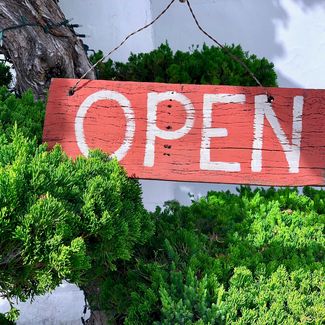
Future of Production
A 'network model' will help secure the future of in-house production
Polly Morgan, head of production at AMV BBDO's in-house studio, Red Studios says future in-house production unit needs to be an almost infinitely scalable department store
05 October 2023
Working with agencies that are as comfortable doing, as they are at thinking, has been a growing client trend for a while. Specialist production shops still dominate the sector, but the demand for in-house capability is growing sufficiently to see a clear direction of travel. Add an increasingly cost sensitive environment to a seemingly insatiable audience appetite for content, and the case for more in-house production muscle becomes obvious.
Agencies have the strategic and creative brains to decipher what will shift the audience needle – while down-funnel production companies know just what it takes to make it happen. But being great at one half of the puzzle is no longer always enough. And as agencies transform themselves to create a faster route to screen for clients, you can see that building in the know-how that historically sat outside, somewhere in Soho, is producing both creative and commercial results.
But the key to building in-house production that works is not to simply duplicate capability – to buy in “making-talent” – that once sat elsewhere. Agencies that seek to just replicate what exists in the outside market quickly learn it’s not the best way to build a creatively effective or commercially sustainable business.
Because the biggest hidden challenge many in-house units face is accidentally building in their own ceiling. Focusing purely on the now, on baseline needs, leads to the biggest limiting factor for ambitious in-house units - becoming typecast by the work they end up with.
The most important ‘abilities’ for future in-house teams to have are therefore simple – availability and flexibility. Always-on, always making, able to move faster, but also able to turn on a dime. To turn their hand to anything, collaborate with anyone, delivering the quality required, with whatever behind-camera talent is needed, by working in a multitude of models. End-to-end, co-pro, hybrid. This flexibility is vital because for an in-house unit to be successful, they now need to understand how to make a far wider range of work than most specialist, external partners. Agency creatives and clients can shop from any boutique on the street when they look outside, so to compete in-house units need to be an almost infinitely scalable department store.
In short - while the end result needs to be the same, or better, in-house will never get there if they do it one way, or try to copy how the latest cool production house does it. In-house teams will never achieve the pace or quality needed if they attach freelance to every project, conversely they will carry too much cost if they try to build a team that can do everything. That’s why designing a production model that works, really is as much art as it is science.
For example, Red Studios is a good example of the hybrid model more attuned to where the industry is headed. A lean studio team built around a core group of central skill sets, orchestrating a vast and fluid network of collaborators. A production unit that can plug seamlessly into an agency team but also handle clients directly. All underpinned by talent drawn from a mix of production company, agency and broadcast backgrounds and a way of working that cuts out redundancies and role duplication to ensure that over 80% of client spend ends up on screen.
The result? The twitch muscle to deliver an enormously broad range of work, spanning large-scale TVCs to social franchises; big influencer collaborations to tactical community content; festival docs to long-form branded programming and commercial entertainment for linear broadcast and streaming. With budgets ranging from three to seven figures, and timelines spanning a day to two years.
This blend of high quality, eclectic work, delivered fast and more cost efficiently than most, limited only by the breadth of its collaborators, is the cornerstone of in-house success in the current and short-term climate. The truth is, with generative AI set to change everything, nobody can predict exactly what’s next for production, but as the outputs proliferate and channels continue to multiply, it’s flexibility that will help in-house teams achieve both creative scale and commercial efficiency. It’s a network model that will make it possible to integrate AI, dynamic creative optimisation (DCO), offshoring, virtual production and a host of other production solutions as the range of both content needs and content tools continues to grow.
And going right back to the start, integrating the people agency-side who best understand how to create ideas that shift the needle and those with the hard skills to make the resulting work brilliantly and fast, into the same project team is ultimately how you create the faster, cheaper, more effective and agile model all clients are looking for.







